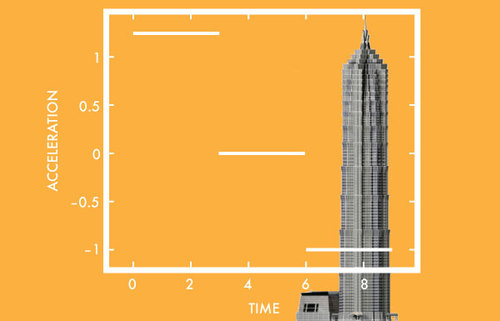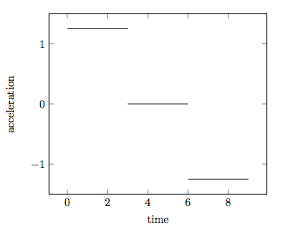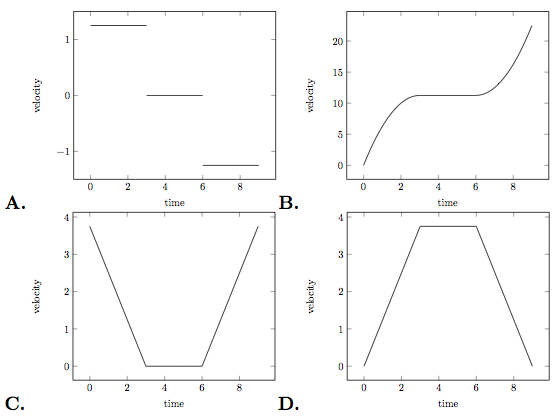Shanghai Tower
 The Shanghai Tower has an architectural height of 632 meters, and is equipped with the world's fastest elevator which can travel at
m/s! If we assume that it travels at it's maximum speed, then it would take just under 36 seconds to reach the top. However, this assumption is unrealistic, as the elevator needs time to increase its velocity, i.e. accelerate.
The Shanghai Tower has an architectural height of 632 meters, and is equipped with the world's fastest elevator which can travel at
m/s! If we assume that it travels at it's maximum speed, then it would take just under 36 seconds to reach the top. However, this assumption is unrealistic, as the elevator needs time to increase its velocity, i.e. accelerate.
If the acceleration of the elevator is given by the following graph:

Which of the following is the best graph to illustrate the velocity of the elevator?

This section requires Javascript.
You are seeing this because something didn't load right. We suggest you, (a) try
refreshing the page, (b) enabling javascript if it is disabled on your browser and,
finally, (c)
loading the
non-javascript version of this page
. We're sorry about the hassle.
As long as acceleration is positive and constant, velocity will increase. When the acceleration becomes zero that does not indicate that elevator has stopped moving but rather it indicates now it is moving with constant velocity. When the acceleration becomes constant and negative it implies that retarding force is applied in the elevator and it's speed will decrease linearly. This complete scenario is best described in Figure (d). Answer = Option (d)